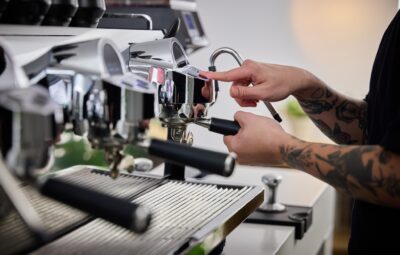Making the greatest cup of coffee is a blend of art and science, involving several key factors that contribute to its flavour, aroma, and overall experience. Here’s what you need to consider:
1. High-Quality Beans
Freshness: Always use fresh coffee beans. Coffee starts to lose its flavour shortly after roasting, so aim to use beans within two weeks of their roast date.
Origin: Different regions produce beans with distinct flavour profiles. For instance, Ethiopian coffee might have fruity and floral notes, while Colombian coffee often has a balanced and sweet taste.
Roast Level: Choose a roast level that suits your preference. Light roasts preserve more of the bean’s original Flavors, while dark roasts offer a bolder, more intense flavour.
2. Proper Grinding
Grind Size: The grind size should match your brewing method. For example, use a coarse grind for French press, medium grind for drip coffee makers, and fine grind for espresso.
Consistency: Use a burr grinder instead of a blade grinder to achieve a consistent grind size, which ensures even extraction during brewing.
3. Water Quality
Purity: Use filtered water to avoid any impurities that can affect the taste of your coffee.
Temperature: Brew with water heated between 195°F and 205°F (90°C – 96°C). Too hot, and you risk extracting bitter compounds; too cold, and you won’t extract enough flavour.
4. Brewing Method
Personal Preference: Whether it’s espresso, pour-over, French press, or AeroPress, each brewing method offers a different experience. Choose one that aligns with your taste preference.
Timing: Pay attention to the brewing time. Over-extraction (too long) can make coffee taste bitter, while under-extraction (too short) can result in a weak or sour flavour.
5. Proper Ratio
Coffee-to-Water Ratio: A common starting point is using 1 to 2 tablespoons of coffee per 6 ounces of water, but this can be adjusted based on personal taste.
6. Freshness
Storage: Store coffee beans in an airtight container, away from light, heat, and moisture. Avoid freezing or refrigerating as this can introduce moisture and affect the beans’ flavour.
7. Attention to Detail
Tasting: Taste your coffee as you go. Adjust variables like grind size, water temperature, and brew time to fine-tune the flavour.
Experimentation: Don’t be afraid to experiment with different beans, brewing methods, and ratios to find your perfect cup.
8. The Human Element
Mindfulness: The process of making coffee should be enjoyable. Being mindful and taking the time to appreciate the steps can make the final cup more satisfying.
9. Enjoying the Coffee
Environment: The ambiance and company in which you enjoy your coffee can greatly enhance the experience. Savouring it in a comfortable setting adds to the pleasure.
By focusing on these elements, you can brew a cup of coffee that not only satisfies but delights, making every sip an experience to savour.




